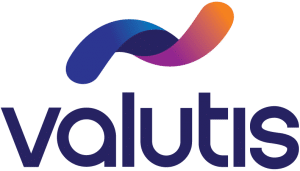Before we dive into how the S-Curve can revolutionize your approach to business growth, let’s take a step back and look at the broader picture.
The S-Curve isn’t just a business tool—it’s a concept that’s been used across various fields to understand and predict growth patterns. From technology adoption to population dynamics, the S-Curve has a long history of helping us make sense of how things grow, evolve, and eventually stabilize or decline.
The Origins and Applications of the S-Curve
The S-Curve, or logistic curve, originated in the field of mathematics and has been applied to everything from biology to technology. In its earliest applications, scientists used the S-Curve to describe how populations of organisms grow.
Initially, growth is slow as the population establishes itself. Then, as resources become more abundant and the population expands, growth accelerates. But eventually, limits—such as available resources or environmental constraints—slow that growth, leading to a plateau.
This model of growth is not confined to the natural world. It has been applied to a wide range of phenomena:
- Technology Adoption: In the tech world, the S-Curve is used to describe the lifecycle of new technologies. Initially, adoption is slow as early adopters take on the risk. Then, as the technology proves its value, adoption rates skyrocket. Eventually, as the market becomes saturated and everyone who wants the technology has it, growth slows down.
- Economic Development: Economists have used the S-Curve to describe the development of industries and economies. New industries often start with slow growth, then experience a boom as they scale. Eventually, they reach maturity, and growth levels off as the market stabilizes.
- Product Life Cycles: In marketing, the S-Curve is used to track the life cycle of products—from introduction to growth, maturity, and eventual decline. Understanding this curve allows companies to plan their strategies for innovation, marketing, and resource allocation.
The S-Curve in Business: An Organic, Systemic Model for Organizational Growth
Now that we’ve seen how the S-Curve applies in various contexts, let’s zoom in on its application in the business world. The S-Curve is a powerful model for understanding organizational growth because it captures the natural, organic phases that every company goes through. Unlike linear models, which assume constant growth, the S-Curve acknowledges that growth is cyclical—there are times of rapid expansion, periods of stability, and potential phases of decline.
In my book Talent-Driven Growth®, I introduce the concept of the S-Curve as the “movie” version or what I call the Lifecycle of Movement. This is where the S-Curve truly comes to life as it guides you through the evolution of your business, scene by scene, allowing you to see the bigger picture and anticipate what’s coming next.
The Stages of the Organizational S-Curve
In the context of your business, the S-Curve helps you understand the lifecycle of growth, from the initial hustle to eventual maturity:
- Learning or Launch Phase (Flat Line at the Bottom)
- Just like in other fields, the launch phase in business is characterized by slow, steady growth. You’re experimenting, finding your footing, and trying to build a foundation. Resources are tight, and every step forward requires significant effort.
- Early Growth Phase (The Steep Ascent)
- Once you’ve found your product-market fit, the growth phase kicks in. Everything you’ve been working on starts to pay off—revenues increase, the team expands, and the company grows rapidly. This is the phase where you see the most visible progress, but it’s also where you encounter new challenges, like scaling operations and managing a growing team.
- Mature Growth Phase (The Top of the Curve)
- After the rapid growth, your business enters the maturity phase. Growth slows as the market becomes saturated, and the competition increases. This phase requires a shift in strategy—from aggressive expansion to optimizing operations and maintaining market share.
- Pinnacle Phase (Plateau)
- As your business reaches its peak, growth plateaus. The focus now shifts to sustaining success, refining processes, and potentially preparing for the next big leap.
- Decline Phase (The Downward Slope)
- If a business fails to innovate or adapt, it risks entering the decline phase. Revenues start to drop, costs rise, and the company’s competitive edge begins to erode. This phase can be managed or even reversed with the right strategies, but it requires a keen understanding of where you are on the S-Curve.
The Lifecycle of Movement: A Proactive Approach to the S-Curve
In Talent-Driven Growth®, I emphasize that understanding the S-Curve through the lens of the Lifecycle of Movement isn’t just about reacting to where your business is—it’s about being proactive and deliberate. The Lifecycle of Movement is your roadmap, showing you not just where you are but what comes next. By thinking of the S-Curve as a movie, you’re not just seeing a snapshot; you’re following a narrative that unfolds over time. This narrative helps you predict the next scene, anticipate challenges, and make informed decisions that keep your business moving forward.
Why the S-Curve Matters for Your Business
Here’s why the S-Curve is such a valuable model for business owners:
- It’s Organic and Realistic: Unlike linear growth models that assume endless upward momentum, the S-Curve reflects the natural ebb and flow of business growth. It recognizes that there are limits to how fast and how long a company can grow before it needs to evolve.
- It’s Systemic: The S-Curve doesn’t just look at one aspect of your business—it considers the entire system. It takes into account how leadership, talent, market conditions, and operational processes interact. This holistic view allows you to diagnose systemic issues rather than just treating symptoms.
- It’s Proactive: By understanding where you are on the S-Curve, you can anticipate the challenges that lie ahead. Whether you’re in the growth phase and need to scale up, or in the maturity phase and need to innovate, the S-Curve helps you plan for the future.
Applying the S-Curve and Lifecycle of Movement to Your Business
The real power of the S-Curve and the Lifecycle of Movement comes from their application. Here’s how you can use them to diagnose your organization’s issues and maintain growth:
- Identify Your Position on the Curve: Start by figuring out where your business is on the S-Curve. Are you just getting started, or are you hitting a plateau? This isn’t just about looking at your revenue numbers—it’s about understanding your market position, your team’s capabilities, and your operational processes.
- Anticipate the Next Phase: Once you know where you are, start planning for what’s next. If you’re in the growth phase, think about how you’ll maintain that momentum. If you’re approaching maturity, start looking for ways to innovate or diversify before you hit a plateau.
- Align Your Strategy with the Curve: Your business strategy should align with your position on the S-Curve. For example, if you’re in the growth phase, focus on scaling your operations and optimizing your processes. If you’re in the maturity phase, consider investing in new products or markets to reignite growth.
The Bottom Line
The S-Curve and the Lifecycle of Movement are more than just theoretical models—they’re practical, organic, and systemic approaches to understanding and managing organizational growth. By recognizing where your business is on the S-Curve and using the Lifecycle of Movement as your roadmap, you can diagnose issues more effectively, plan for the future, and ensure that your company continues to thrive.
So, if you’re serious about maintaining momentum and avoiding the pitfalls of stagnation or decline, it’s time to get familiar with the S-Curve and the Lifecycle of Movement. These aren’t just tools, they’re your guides to sustainable, long-term success.



